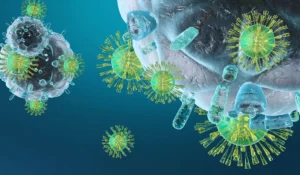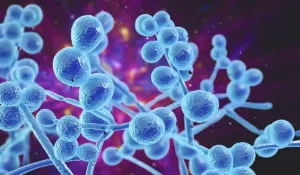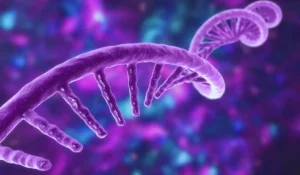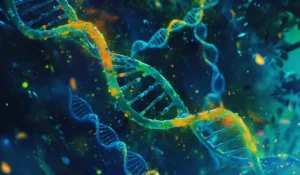What is Fabry Tay-Sachs Disease?
Tay-Sachs disease is a rare genetic condition that results from a mutation in a gene namely HEX-A on chromosome 15. HEX-A gene codes for beta-hexosaminidase A enzyme present in the lysosomes that breaks down a specific fatty compound called GM2 ganglioside found mainly in neurons.
So in other words, TSD or Tay-Sachs disease is a lysosomal storage disorder as it causes accumulation of substances in various cells due to the defective functioning of lysosomal enzymes. It is also called GM2 gangliosidosis type 1.
Now, without HEX-A, this fatty substance piles up inside the lysosomes inside neurons leading to progressive symptoms of CNS degeneration including visual problems, hypotonia or decreased muscle tone and seizures. These symptoms start to develop by 3-6 months of age and it even results in death by the age of 4.
TSD is an autosomal recessive genetic disorder and it affects both males and females equally. Autosomal recessive means a person needs to inherit one copy of a mutated HEX-A gene from each heterozygous or asymptomatic parent in order to develop homozygous or diseased state.
Also, TSD can be seen in isolated, inbred populations. This is why there is a high occurrence of TSD in infants of Ashkenazi jews, French Canadian, Amish and Cajun populations.
Now, this mutation either results in defective HEX-A synthesis or no HEX-A synthesis at all leading to partial loss of enzyme activity (if it’s defective) or a complete HEX-A deficiency (if there is no HEX-A synthesis).
So, with some severe HEX-A mutations, there will be accumulation of GM2 over a longer period of time, resulting in a more gradual onset of CNS symptoms in some people.
What are the symptoms of Tay-Sachs Disease?
Before discussing the symptoms, let’s now categorize TSD depending on the age of onset:
TSD can be: infantile with 3-6 months age of onset; juvenile with 2-5 years of age of onset; chronic, with onset in the first or second decade of life; and finally late-onset, with the first indication of symptoms in the 2nd-3rd decade of life.
Common signs of CNS degeneration seen in infantile, juvenile and chronic TSD are visual issues, decreased muscle tone and seizures. Whereas for the late-onset TSD, motor problems and even bipolar related psychological symptoms tend to appear.
How is Tay-Sachs Disease diagnosed?
Ophthalmologists can easily detect TSD visually. Individuals with TSD are identified to have a cherry red spot in the eye’s macula which is due to the GM2 build up in the retinal cells around the central macular region.
The actual diagnosis of TSD is measuring HEX-A activity level in serum, tear, leukocytes, or any body tissues. Also, Genetic testing for HEX A gene mutations and gene sequencing are done to diagnose as well as detect heterozygous carriers.
What is the treatment of Tay-Sachs Disease?
Unfortunately, there is no cure for TSD or its forms.
For infantile and juvenile TSDs, therapy is supportive care to help control symptoms. This includes neurologists to manage seizures, gastroenterologists, surgeons and nutritionists to manage feeding, physical and occupational therapists to help with mobility and daily routines.
Even in later onset TSD, management of symptoms is supportive mainly dealing with the intensifying CNS degeneration symptoms.
Therapies like enzyme replacement or gene therapy are there, but have not come into effect and are active areas of research. Therefore, genetic counseling for high risk TSD individuals is initiated to block the inheritance of mutations linked with TSD.
In particular, partners who are at risk of giving birth to a TSD child have choices namely Amniocentesis, Chorionic Villus sampling, ovum donation, artificial insemination and in vitro fertilization for them to have a baby with no TSD or other GM2 disorders.
Quick summary
Tay-Sachs disease or TSD is an autosomal recessive genetic condition that results from a mutation in a gene namely HEX-A on chromosome 15.
TSDs are examples of lysosomal storage disorder that leads to GM2 ganglioside build up within lysosomes in the neurons of CNS resulting in progressive symptoms of CNS degeneration including visual problems, hypotonia or decreased muscle tone and seizures
Diagnosis includes conducting enzyme assays, DNA sequencing and genetic testing.
Since there is no cure for Tay-Sachs disease, treatment is supportive therapy. Genetic counseling is also obtainable. Gene therapy and enzyme replacement therapy are active areas of research.
Reference
Encyclopedia of Molecular Mechanisms of Disease by Florian Lang
Encyclopedia of Molecular Biology by Thomas E. Creighton
Rare Diseases: Integrative PPPM Approach as the Medicine of the Future from Springer







